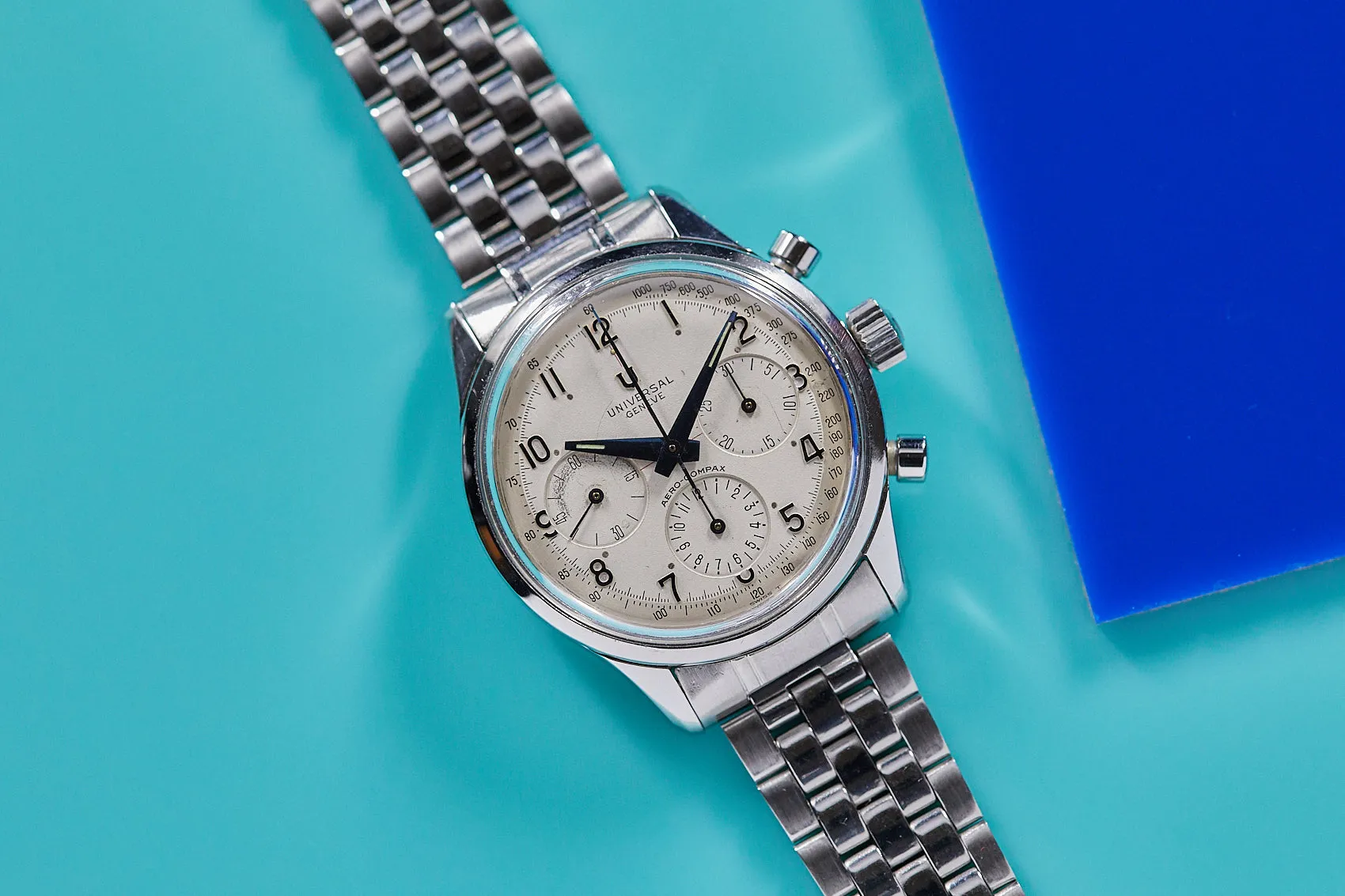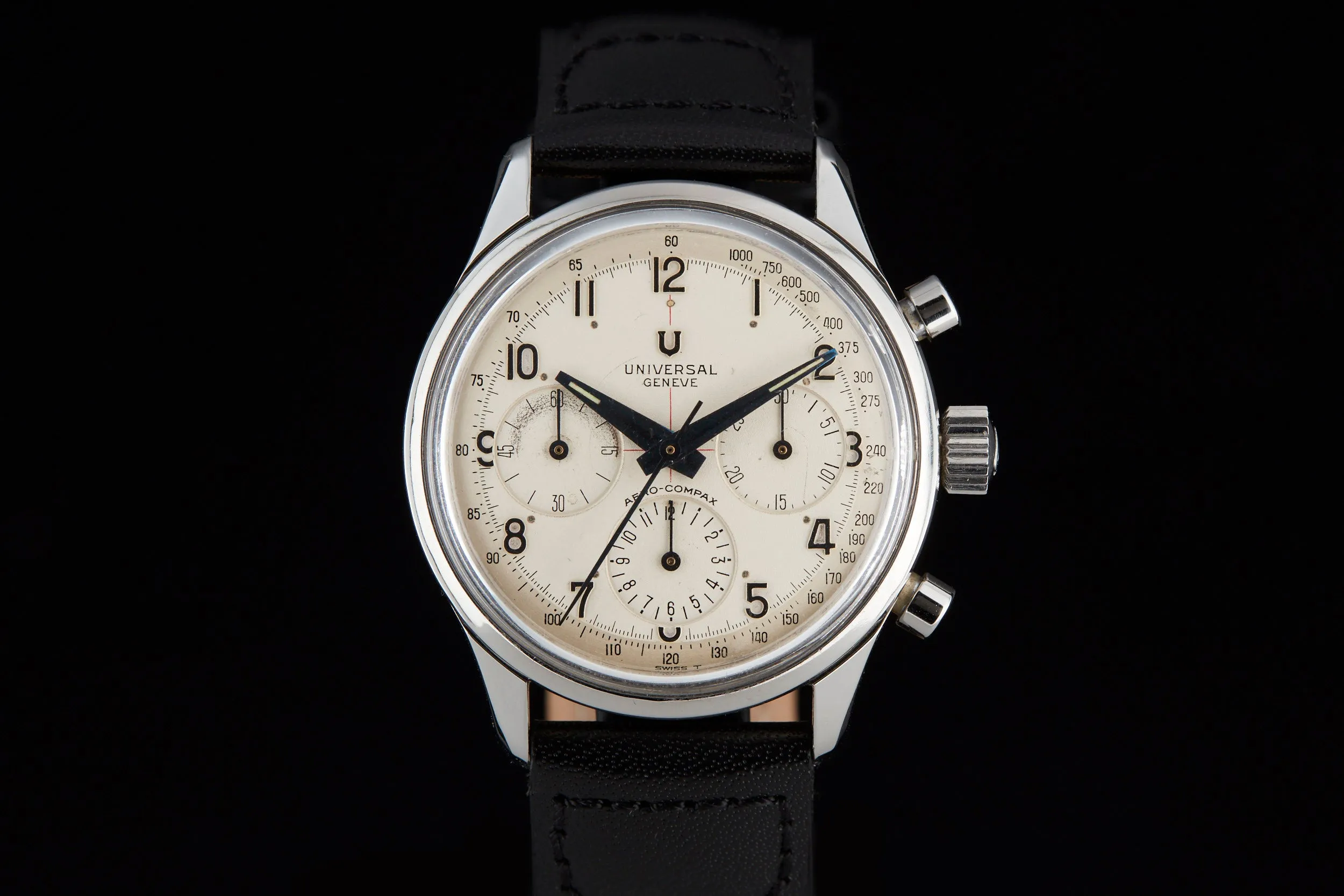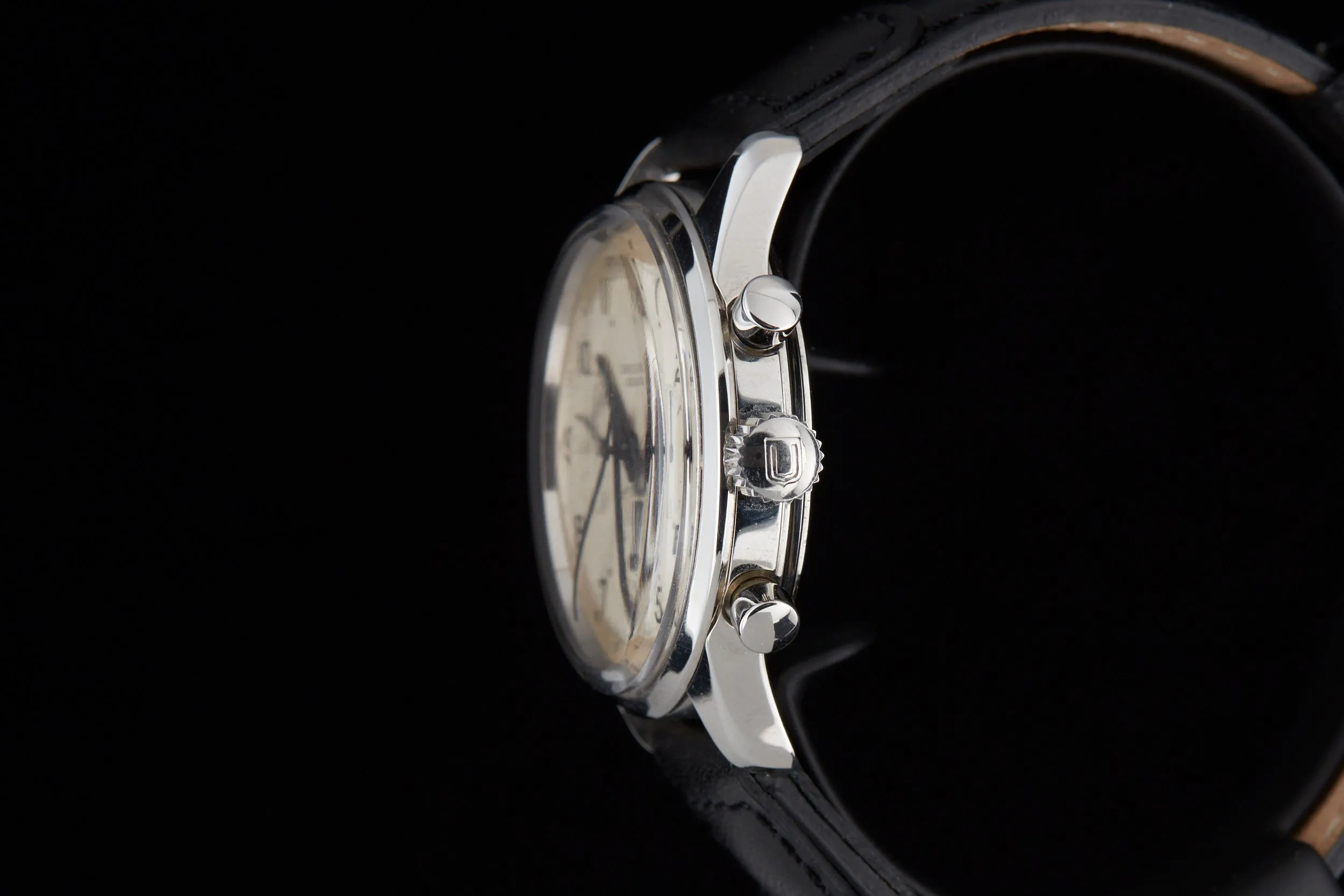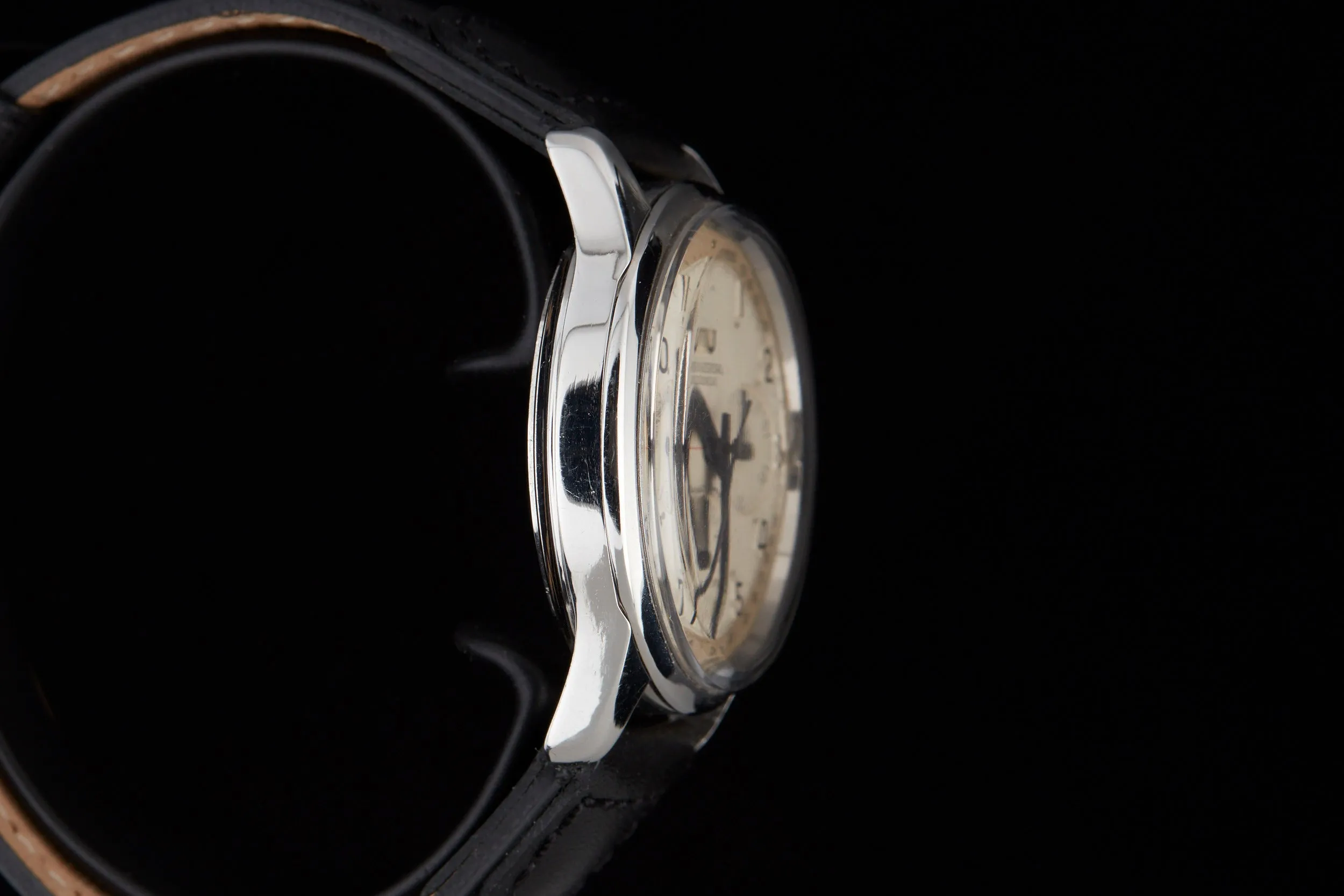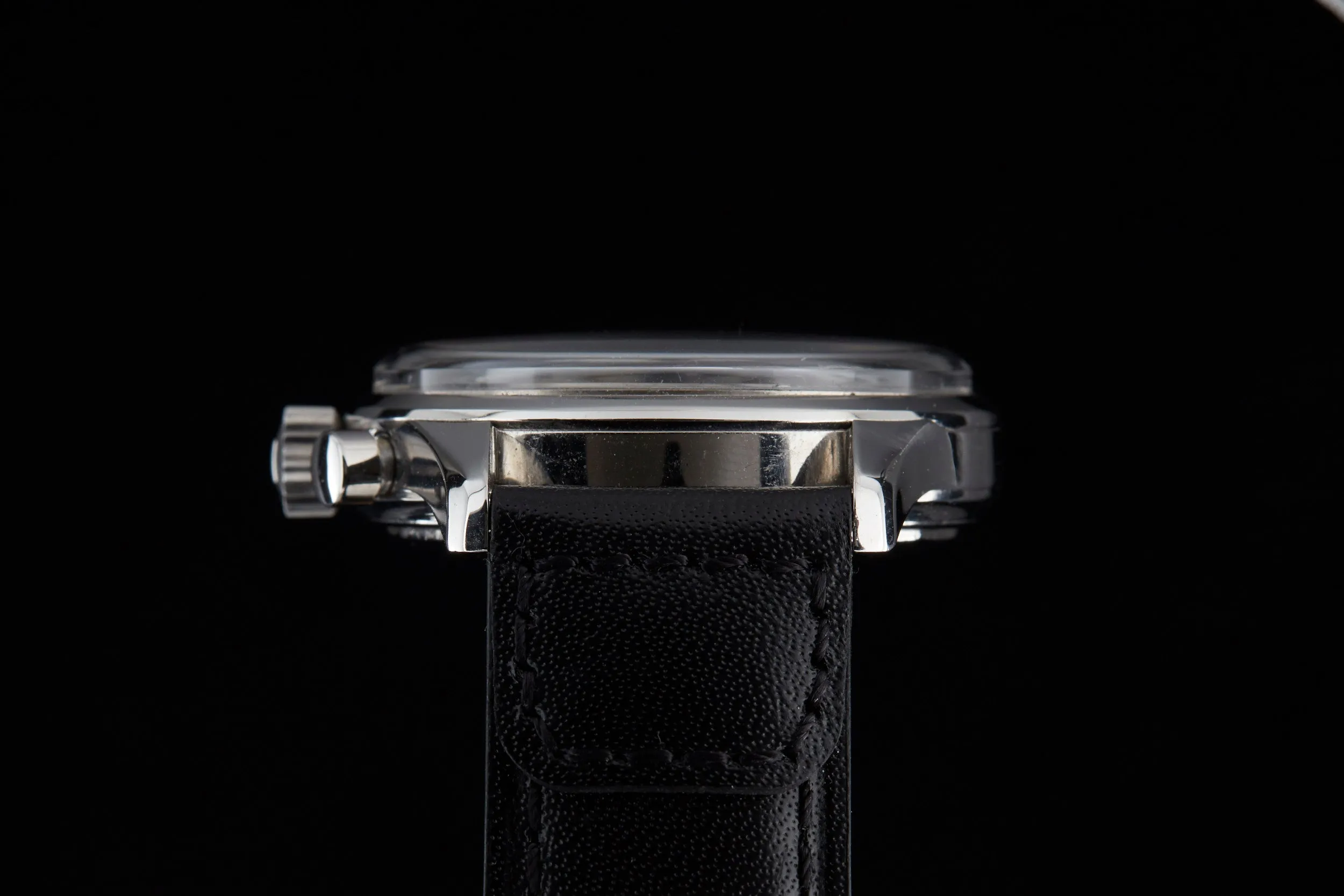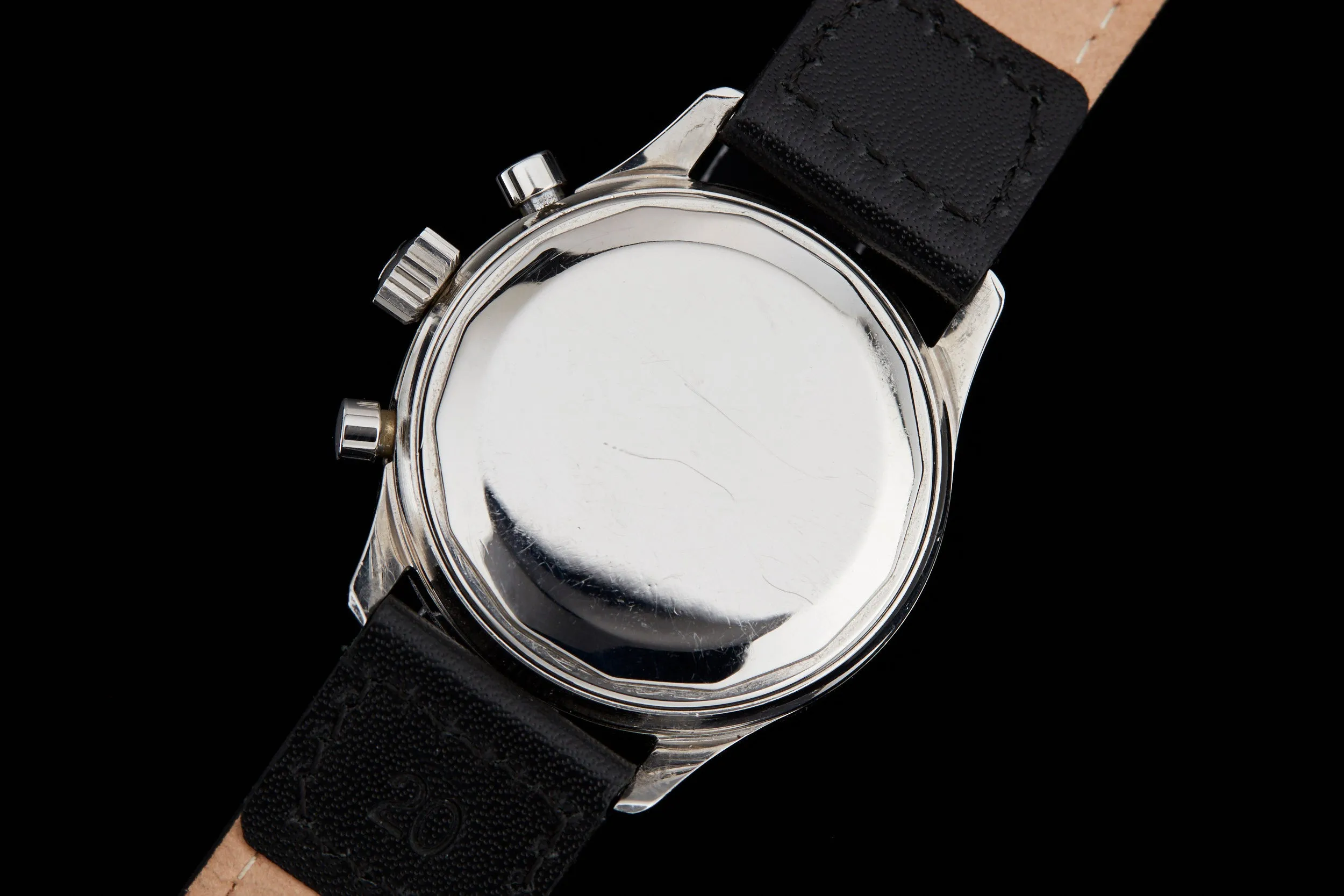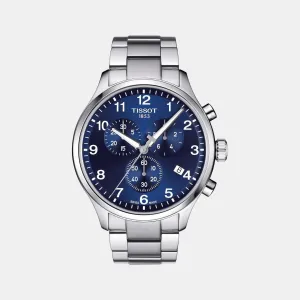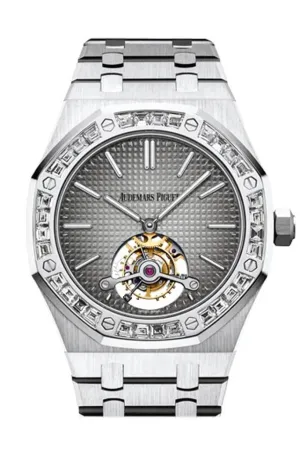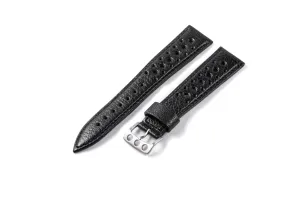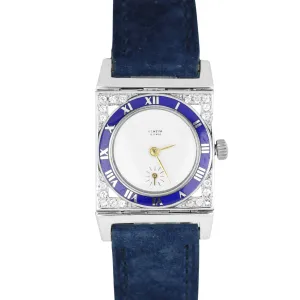Product Details
+Why We Love It
This is not your average Aero-Compax.
What we offer here is a Reference 22704/3, or “Type B”. Dating from the 1950s or early 1960s, this Aero-Compax’s was produced shortly before the model would receive a major redesign in the mid-1960s. Without the fourth register at 12 o’clock that would define the earliest models, or the rotating bezel of the latest, the “Type B” nevertheless has a lot going for it.
Take the case for instance—at 37.5mm it’s large enough to be considered “jumbo” for the era, which happens to be the perfect size for the modern wrist. Touches like the blued steel hands with luminous pips provide an artful contrast to the lightly-patinated dial. Sure, this might have been designed as a tool watch, but it packs a helluva punch visually speaking.
The Story
Introduced in the 1940, the Aero-Compax’s claim to fame was an unusual dial layout. Unlike conventional chronographs, which possess two or three registers, early examples of Aero-Compax featured four. The upper-most register at 12 o’clock was a secondary time display, with two hands that could be set by the crown at 9 o’clock.
This complication, for which Universal Genève received two patents, functioned in much the same way as a silent alarm. For example, if a pilot had orders to rendezvous with his squadron at 8:00, then he would set the hands in the upper-most register to that time. Independent of the main time display, the hands in the upper register would remain affixed at that time, serving as a visual reminder.
The Aero-Compax underwent several redesigns throughout its life. Major changes included a major one in the 1960s that saw the addition of a rotating external bezel (which allowed the wearer to track a second timezone), conversion to a 24-hour dial layout, and the removal of that fourth register at 12 o’clock. However, the Aero-Compax that we feature here is a lesser-known reference, making it highly desirable.




